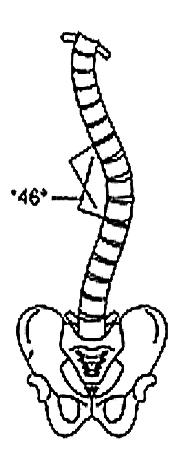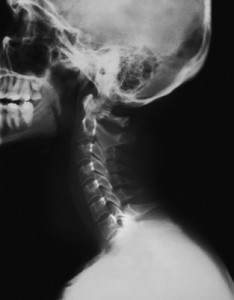 The word scoliosis is a word we have all heard before; it is the lateral bending of the spine mostly observed to the left and right and back again to form the letter ‘S’. Two other terms that you may have heard somewhere are Lordosis and Kyphosis, and these are forward bending of the spine and backward bending of the spine, respectively.
The word scoliosis is a word we have all heard before; it is the lateral bending of the spine mostly observed to the left and right and back again to form the letter ‘S’. Two other terms that you may have heard somewhere are Lordosis and Kyphosis, and these are forward bending of the spine and backward bending of the spine, respectively.
At the time of birth we all have a spine shaped in a ‘C’ or in the fetal position with no muscle development to speak of and we all have to be very careful holding a newborn baby. Over the first several months, as the baby starts to move the head around and the neck muscle get stronger, the neck begins to form a forward curve, or the Cervical Lordosis. By the third month we have a new curve that allows baby to firmly hold their head up. Over the next six months baby starts to crawl and when the lumbar and pelvic muscles are strong enough, we see babies start to stand up and then walking, once the lumbar lordosis has been properly formed. Now the entire spine looks like an ‘S’ from the side view, but this is a desired position, unlike scoliosis.
SIDE NOTE: It is a mistake, an error in structural development, to force the baby to start walking too early or to put them in swings or walkers; because their spinal muscles and curves are not ready for a vertical position for that length of time. Let them crawl as long as possible to build strong lumbar muscles that form a proper Lumbar Lordosis. Forcing early weight on the lower spinal joints may be part of the reasons why scoliosis develops several years later.
 LORDOSIS: Normal forward curves favor ideal spinal stability and maintenance of its parts. An increase in lordosis places additional structural stress on the posterior aspects and damages the joints. A decrease, a loss of or a reversal of the lordosis places additional stress on the anterior part of the spinal vertebra where the spinal disc is located. This may result in advanced disc degeneration, calcific spur formations and disc desiccation or dehydration. Degenerative spondylosis is the end result of decades of an abnormal lordosis.
LORDOSIS: Normal forward curves favor ideal spinal stability and maintenance of its parts. An increase in lordosis places additional structural stress on the posterior aspects and damages the joints. A decrease, a loss of or a reversal of the lordosis places additional stress on the anterior part of the spinal vertebra where the spinal disc is located. This may result in advanced disc degeneration, calcific spur formations and disc desiccation or dehydration. Degenerative spondylosis is the end result of decades of an abnormal lordosis.
 KYPHOSIS: The thoracic spine has a normal kyphosis. It retains the original spinal curve since birth. This part of the spine is specifically designed for the ribs to be attached to the spine and helps to form the chest cavity that houses the lungs and the heart. An abnormal kyphosis can be a painful condition since the rib joints can be affected. An increase in the kyphosis (hunched back appearance) often results from compression fractures in osteoporosis but in the young this happens due to poor posture, too much time spent on the computer and other gadgets for way too long a period of time. A decrease in kyphosis mostly happens because of spinal misalignments. That’s why people see a chiropractor.
KYPHOSIS: The thoracic spine has a normal kyphosis. It retains the original spinal curve since birth. This part of the spine is specifically designed for the ribs to be attached to the spine and helps to form the chest cavity that houses the lungs and the heart. An abnormal kyphosis can be a painful condition since the rib joints can be affected. An increase in the kyphosis (hunched back appearance) often results from compression fractures in osteoporosis but in the young this happens due to poor posture, too much time spent on the computer and other gadgets for way too long a period of time. A decrease in kyphosis mostly happens because of spinal misalignments. That’s why people see a chiropractor.
Want to keep a healthy spine? You are invited to download these Posture Exercises developed by Life Chiropractic College and University. In addition to these, stay active with various physical interests. Life is better that way!
Yours in Heath,
docMIKE

 Follow
Follow
No Comments